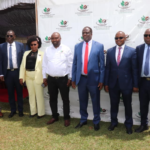By Zablon Oyugi May 3 2025, In the drylands of Kenya and southern Ethiopia, where pastoralist communities have long struggled with erratic markets, poor infrastructure, and limited access to timely information, a digital innovation known as KAZNET is reshaping how livestock is traded.
Through citizen participation and real-time data sharing, KAZNET is equipping herders and traders with actionable market intelligence, improving incomes, and enhancing resilience in the face of climate shocks.
KAZNET is a digital livestock market intelligence platform developed by the International Livestock Research Institute (ILRI) with support from partners including USAID and the UK’s Foreign, Commonwealth & Development Office (FCDO).
It is designed to help communities in arid and semi-arid regions collect and access market data that would otherwise be unavailable or delayed.
How It Works
At the heart of the platform is a network of over 50 citizen volunteers known as “enumerators” or “contributors.” These community members, many of whom are livestock traders or herders themselves, are trained to collect key information from local livestock markets.
Using smartphones, they gather data on livestock species, breeds, ages, conditions, and prices, as well as volumes traded. The data is then uploaded via the KAZNET mobile application and made accessible in near real-time to users across the network.
The initiative is currently active in several counties in northern Kenya, including Isiolo, Garissa, Marsabit, Wajir, and Turkana. It is also being piloted in parts of southern Ethiopia.
Putting Power in the Hands of Livestock Keepers
For many pastoralists, market information has traditionally come through word of mouth or after-the-fact updates, leaving them vulnerable to poor bargaining power and missed opportunities. KAZNET changes that by putting real-time data directly into the hands of the people who need it most.
Abdiaziz Ibrahim Bulle, a livestock keeper and trader from Ngare-Mare in Isiolo County, joined the platform in June 2023. Since then, he has witnessed firsthand how KAZNET is improving decision-making among his peers.
“The information we generate helps livestock keepers make informed decisions on when and where to buy or sell their livestock at the best price and where to find suitable grazing areas,” Bulle said.
Because contributors like Bulle are embedded within the community, they understand local market dynamics and can interpret trends quickly. Their dual roles as both information providers and users give them a personal stake in the accuracy and relevance of the data.
Integrated into National Agricultural Systems
KAZNET is not a standalone project. It feeds into larger government information systems, including the Kenya Agricultural Observatory Platform (KAOP), managed by the Kenya Agricultural and Livestock Research Organization (KALRO), and complements the Kenya Integrated Agricultural Management Information System (KIAMIS). These platforms aim to provide a coordinated view of Kenya’s agricultural performance and climate-related risks.
By integrating KAZNET data, policymakers and researchers gain more accurate, granular insights into livestock flows and market behavior in the ASAL regions. This, in turn, can inform more responsive interventions—whether it’s pre-empting a drought-related crisis or planning infrastructure investments in remote markets.
Climate Resilience Through Information
With climate change intensifying the frequency and severity of droughts in East Africa, livestock keepers are facing greater uncertainty than ever before. Markets often collapse during prolonged dry spells, and herders may be forced to sell animals at very low prices to avoid losses. KAZNET offers a buffer by allowing herders to plan sales more strategically, identify stronger markets, and reduce unnecessary travel.
“Through timely and relevant data, KAZNET is helping to build resilience in communities that are on the frontline of climate change,” said Dr. Mohamed Said, one of the project’s leads at ILRI.
The platform also enables early warning alerts based on market fluctuations, which can signal worsening conditions in particular regions. This kind of data-driven monitoring is crucial for humanitarian agencies and local governments seeking to target relief efforts more effectively.
Challenges and the Road Ahead
While the benefits of KAZNET are clear, the platform still faces challenges in scaling up. Internet connectivity remains unreliable in some remote areas, and the sustainability of volunteer-driven data collection will depend on continued training, incentives, and technical support.
Even so, KAZNET represents a significant shift in how information flows within the livestock value chain. It democratizes data, empowers communities, and provides a replicable model for market intelligence systems in other regions facing similar challenges.
As East Africa continues to invest in digital infrastructure and climate-smart agriculture, tools like KAZNET could become vital components of a more resilient and inclusive livestock economy—one where pastoralists are not just surviving but thriving in the digital age.







